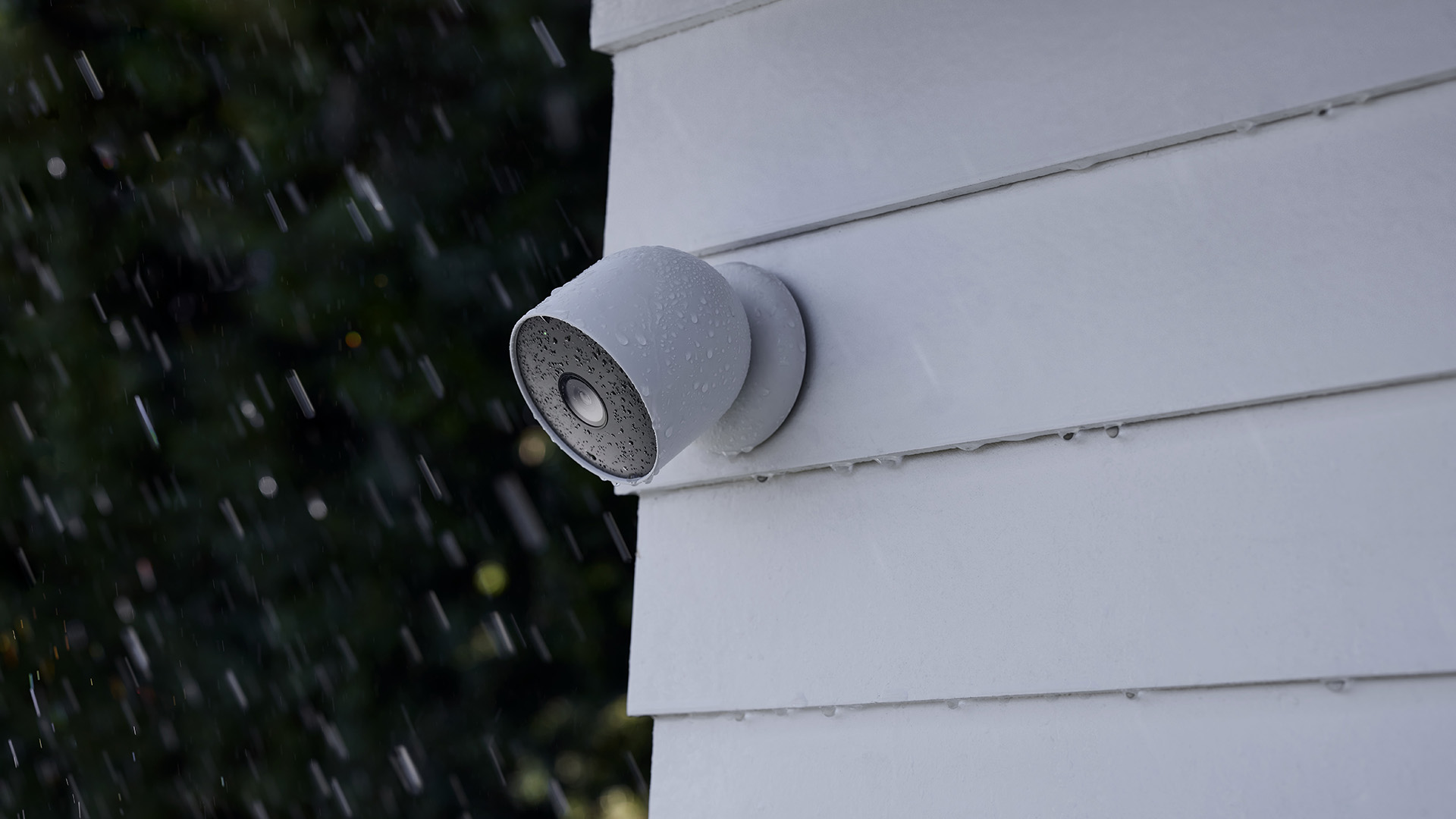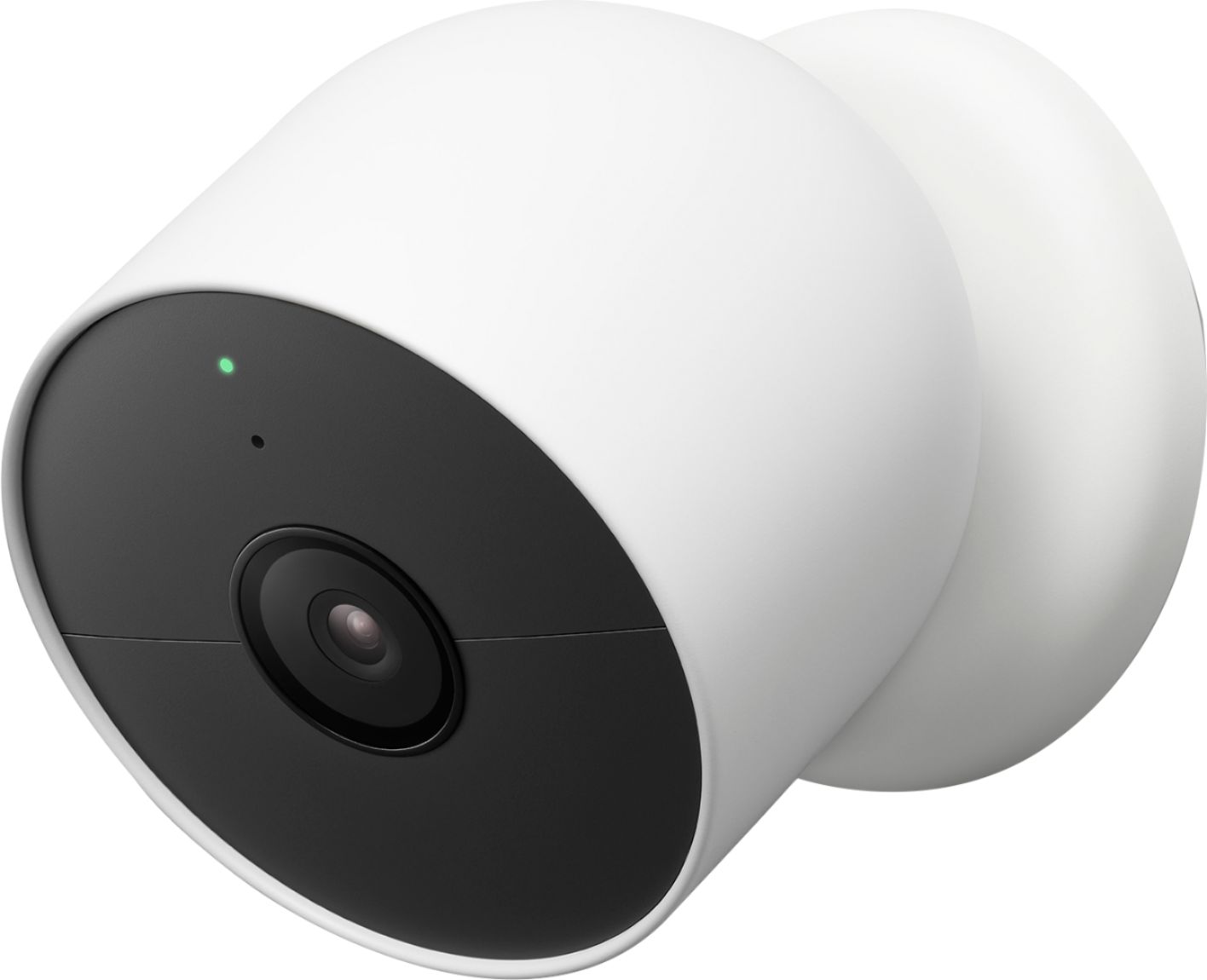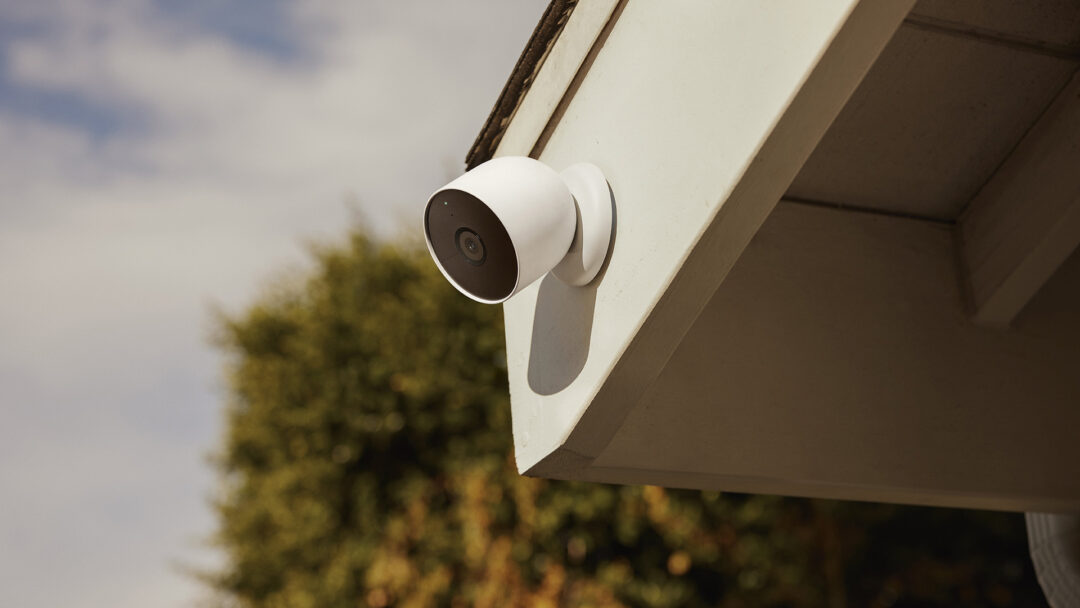What is the perfect gift for the person who has everything? A surveillance camera to make sure no one comes and takes it all!
Google Nest Cam is the latest version of Google’s surveillance camera. The camera is available in several variants, but here we look at the standard version, which is intended for use both indoors and outdoors, and equipped with a rechargeable battery, so it does not have to be connected to the socket constantly.
There is also a cheaper, wired version without a battery as well as an all-in-one version with a built-in spotlight. The projector is (excuse the pun) mostly for sight, so tresspassers will know that they have been spotted. Since the standard version can already record in complete darkness thanks to six infrared LEDs placed in a ring around the camera lens.
The connection is wireless via Wi-Fi. Only 2.4 GHz networks are supported, but the 5 GHz band would anyway be unsuitable for cameras that need to be placed in remote corners far from the router due to its short range. Or even outside the house.
Easy to get started
The setup is, as with other Google devices, fairly automatic, and the camera is quickly incorporated into the house’s Google Home setup, after which it can be followed on the mobile via the Google Home app or on a smart screen like Google Nest Hub 2.
It is not necessary to have a subscription to record and watch video from Google Nest Cam. You can continuously see the last three hours of automatic recordings that the camera makes when something interesting happens within its field of view (up to six meters away and at a 130 degree angle in front of the camera).

Only the relevant
Google Nest Cam is not a cheap camera. One can find surveillance cameras with similar technical data for half the price. On the other hand, there is a considerable amount of artificial intelligence built into the Nest Cam, which should cause the camera to send alerts to the user only when something relevant happens in front of the lens. Google has trained the cameras’ AI with 40 million images to teach them to recognize certain objects.
In the Google Home app, you can choose to be notified about – or ignore – people, animals and vehicles, respectively. That feature should be able to save a lot of false alarms. For example, I do not need to be told when the dog takes a sip of water in the kitchen. But if people show up in the kitchen while I’m not home, I’ll definitely be notified!
You can also define a section of the image to be a “zone of interest”, where other rules for warnings apply. In this way, one can e.g. make the camera keep an eye on the area right in front of the front door, but ignore people passing by on the edge of the field of view.
Finally, one can add a number of filters that should give rise to warnings. It can be people with familiar or unknown faces or the sound of smoke alarms, broken windows or dog barking, respectively.
A relief
One might ask if it pays to spend extra dollars and computing power on something resembling a luxury problem. But after trying Google Nest Cam with regular cameras without AI, the answer is an unconditional “yes”. First, artificial intelligence was able to flawlessly distinguish between humans and animals inside and outside the zone of interest. And secondly, it’s a relief to avoid being disturbed by warnings about irrelevant traffic in the camera’s field of view.

Pay to be overlooked
If you want longer recording time and more features, you need to subscribe to Google Nest Aware. For 5 euros a month you get 30 days of event-based video, and for 10 euros you get 60 days of event-based video – or ten days of video with recording in 24-hour operation. The subscription covers all Google Nest cameras in the house.
In addition to longer recording time, you also get access to more advanced video features. The camera’s artificial intelligence can learn to ignore movements in the background from traffic, and via face recognition, the camera can recognize and ignore residents of the household – so you do not become a star in your own TV show if you forget to turn off the surveillance camera.
Google Nest Cam is equipped with a microphone so you can listen to the video. For indoor use, it worked just as impeccably as the picture. But the microphone is not protected from wind noise, which you will hear with all undesirable clarity if the camera is placed outdoors.
Conclusion
Google Nest Cam is not a cheap camera, but the well-functioning artificial intelligence fully offsets the extra price compared to e.g. Arlo Essential Indoor Camera.
If you have already thronw in your lot with Google and have decided to let them manage your smart home with Google Home (and trust that Google does not look unnecessarily much into your doings), the camera is actually cheap. And the subscription, which provides access to longer recording and more features, is cheap, too.

160 €
Specifications
- Type: Surveillance camera
- Camera: 2 Mp, 1/2.8″ sensor, 130° diagonal field of view, 6x digital zoom
- Video: 1080p Full HD video @ 30 fps HDR
- Audio: Built-in microphone and speaker for bidirectional communication
- Power: Built-in 6000 mAh battery, AC adapter with magnetic contact
- Night recording: Yes, 6 IR LEDs built-in
- Wireless: Wi-Fi 802.11bgn, 2.4 GHz (min. 2 Mbit/s per camera), Bluetooth LE
- Works with: Android, iOS
- Dimensions and weight: Ø 8.3 x 8.3 cm/398 g
- Weather resistance: IP54, -20 to +40° C
- Motion sensor: 1 piece, 110 ° diagonal viewing angle
- Web: google.com

